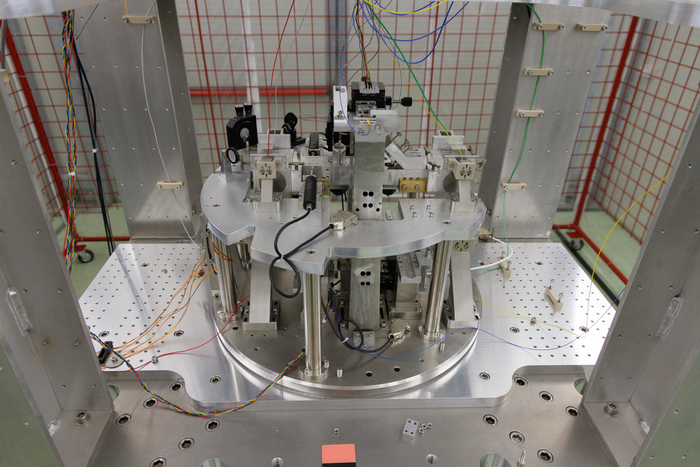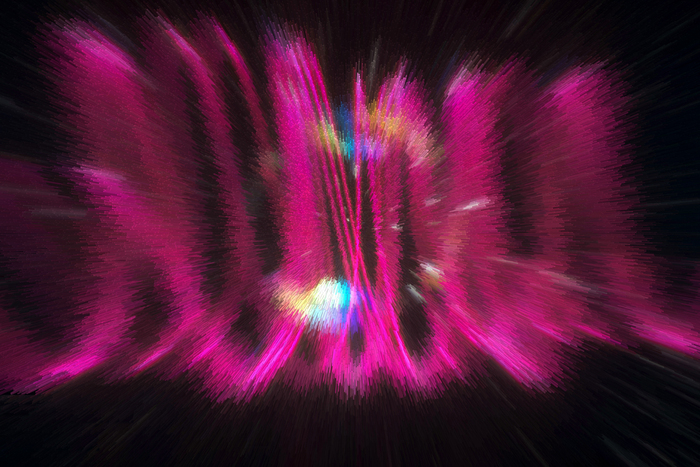How do you measure what can not be measured? How do you come up with something that escapes almost every observation? When researchers deal with neutrinos, they are faced with exactly these questions. The tiny particles hunt through the universe in unimaginable quantities almost as fast as lightning. But because they are extremely low-mass and electrically charged, they hardly come into contact with other matter. Therefore, they are also sometimes called flippantly as ghost particles.
The thing is, 60 to 100 billion neutrinos patter every second of every square inch of the Earth - and nothing happens. Only at some neutrino observatories, housed in exotic locations such as old mines or the South Pole, can the permanent bombardment be proved.
Nevertheless, neutrinos are important to our understanding of the world. With their help, scientists can draw conclusions about the time immediately after the Big Bang. Likewise, they can think about the formation of large-scale cosmic structures. And those who want to venture into areas beyond the known models when investigating the very smallest building blocks of the world should also deal with neutrinos.
500,000 times lighter than an electron
In an elaborate experiment at the Karlsruhe Institute of Technology (KIT) researchers are currently working to determine the rest mass of the mysterious particles with unprecedented precision. The preliminary work alone lasted 15 years. Now the team has published first results. Thus, a neutrino is at least 500,000 times lighter than an electron. Specifically, the mass of the particles is at most 1.1 electron volts.
The unit electron volts is usually used in atomic physics for energy. But it can also be used for the mass, because according to Albert Einstein's Special Theory of Relativity mass can be converted into energy.
Earlier measurements had given the upper limit of neutrino rest mass still with 2 electron volts. From previous cosmological calculations, researchers have already set a minimum mass. This is 0.1 electron volts, but is based on some assumptions. The correct result is somewhere between about 0.1 and 1.1 electron volts. The "Katrin" experimental setup in Karlsruhe could reduce the corridor in the coming years to between 0.1 and 0.2.
Uli deck / dpa
The vacuum chamber of the "Katrin" experiment is about as long as a blue whale
Because neutrinos are so constantly evading observation, they are indirectly measured in the experiment. This means that the radioactive decay of the hydrogen isotope tritium, which has a half-life of over 12 years, is being investigated. The process not only produces the isotope helium-3, but also an electron and a certain kind of neutrino.
In the 23-meter-long stainless steel vacuum chamber of the experiment, the energy of the resulting electrons is measured with a spectrometer. From this can then derive the energy of neutrinos - and thus their mass.
There are three types of ghost particles
The particles exist in three different types: electron, muon and tau neutrino. But a particle can switch between these species. This was made clear to researchers about 20 years ago - and that was also the moment when it was clear that the particles could not be completely massless. Otherwise such a change would not be possible according to the physical laws known to us. For this recognition, the 2015 Nobel Prize in Physics went to the Japanese Takaaki Kajita and the Canadian Arthur McDonald.
You might also be interested in
In Karlsruhe, the rest mass of the electron neutrino is concretely measured. From this the values for muon and tau neutrino can be determined. The currently presented results are based on a 28-day measurement period. All in all, the experiment is supposed to run for 1000 days - providing even more precise results.
"The fact that 'Katrin' already has the world's best sensitivity for the neutrino mass after a measuring campaign of just a few weeks in the spring of 2019 and improves the multi-year measurements of the previous experiments by a factor of two, shows the extraordinarily high potential of our project," cheer Christian Weinheimer from the university Münster and Guido Drexlin from KIT. Both are co-speakers of the experiment, involving a total of 150 researchers from 20 institutes in seven countries.
You might also be interested in
And even researchers who are not involved in the project, praise: "It is impressive, the great technological challenges that have mastered the scientists in recent years to build the most accurate balance in the world," says Christian Stegmann, Director of the Department of Astroparticle Physics at the Deutsches Elektronen-Synchrotron in Zeuthen, in conversation with SPIEGEL.
"Even the first result of the experiment shows that we can expect further groundbreaking results in the future," hopes Stegmann. The mass of the neutrino, according to the researcher, is after all one of the essential unknowns of the standard model of the elementary particles and has a great influence on the understanding of the people of the universe.


/cloudfront-eu-central-1.images.arcpublishing.com/prisa/TMO34TYLKQEG5UOPIQW2M742GU.jpg)











